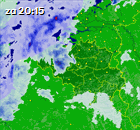20 m (14.0-14.35 MHz) Propagation..
The 20m band is the best DX band because it is open for long-skip for more hours than any other band and it doesn’t suffer from QRN as the lower bands. In years of high sunspot numbers, short-skip and long-distance DX can be worked at the same time during daylight hours. Although DX is there most of the time, most of the DX worked is at sunrise, sunset, and all night during peak sunspot years. During the years of low sunspots, it is common to work into Europe and Africa during the day and into Asia and the South Pacific during the evening hours and early at night. Low sunspot numbers cause 20m to go dead for east to west contacts at night an hour or so after sunset, but there is some TE propagation. During periods of moderate sunspot numbers, the propagation on this band is a blend of propagation of low and high sunspot years.
17 m (18.067-18.167 MHz) Propagation..
The 20m band is the best DX band because it is open for long-skip for more hours than any other band and it doesn’t suffer from QRN as the lower bands. In years of high sunspot numbers, short-skip and long-distance DX can be worked at the same time during daylight hours. Although DX is there most of the time, most of the DX worked is at sunrise, sunset, and all night during peak sunspot years. During the years of low sunspots, it is common to work into Europe and Africa during the day and into Asia and the South Pacific during the evening hours and early at night. Low sunspot numbers cause 20m to go dead for east to west contacts at night an hour or so after sunset, but there is some TE propagation. During periods of moderate sunspot numbers, the propagation on this band is a blend of propagation of low and high sunspot years.
17 m (18.067-18.167 MHz) Propagation..
The 17m band propagation acts much like 20m except it is affected more by low sunspot numbers than 20m. In periods of low sunspot numbers, this band doesn’t stay open as late as 20m, fading out as the sun begins to set. Yet, the 17m band does stay open all night when the sunspot numbers are high. The propagation on this band is like a blend of 20m and 15m, but it is closer to 20m. Most users of this band use dipoles and other simple antennas since triband beam antennas wont work here.
15 m (21.0-21.45 MHz) Propagation..
15m-band is a fantastic DX band during the high sunspot years. This band may be open for 24 hours, and it is common to work more than 100 countries during a contest weekend on this band. Many have worked more than 300 different countries on 15m. In years of low sunspot numbers, 15m may be completely dead for several days in a row. When it opens during those years, you may hear only the Caribbean, South America, and on rare occasions the extreme southern part of Africa via TE-propagation.
Afternoon TE-propagation (TransEquatorial-propagation)
Afternoon TE-propagation peaks during the mid-afternoon and early evening hours and is generally limited to distances of 6.000 - 8.000 km (4,000 – 5,000 miles). Signals propagated by this mode are limited to approximately 60 MHz. Afternoon TE-propagation signals tend to have high signal strength and suffer moderate distortion due to multipath reflections.
Evening TE-propagation
Afternoon TE-propagation (TransEquatorial-propagation)
Afternoon TE-propagation peaks during the mid-afternoon and early evening hours and is generally limited to distances of 6.000 - 8.000 km (4,000 – 5,000 miles). Signals propagated by this mode are limited to approximately 60 MHz. Afternoon TE-propagation signals tend to have high signal strength and suffer moderate distortion due to multipath reflections.
Evening TE-propagation
The second type of TE-propagation peaks in the evening around 1900 to 2300 hours local time. Signals are possible up to 220 MHz, and even very rarely on 432 MHz. Evening TE-propagation is quenched by moderate to severe geomagnetic disturbances. The occurrence of evening TE-propagation is more heavily dependent on high solar activity than is the afternoon type.
12 m (24.89-24.99 MHz) Propagation..
The 12m band is much like 15m, but it is affected more by sunspot numbers. Because this band is little used, many hours can pass without hearing any amateur signals. Occasionally you will hear "CB-pirates" on lower sideband. It is mostly a daytime band but openings to Asia and the South Pacific are common early at night during peak sunspot years. The reason this band is little used is that beam antennas don’t cover this band.
10 m (28.0-29.7 MHz) Propagation..
The band that is most affected by the sunspot numbers is 10m. You may have noticed in this discussion, the higher the frequency, the more it is affected by sunspots. During peak sunspot years, 10m can be open some days for 24 hours. Mostly it is a daytime band. When they are at the peak, the sunspots enable you to work worldwide with power as low as 5 Watts. In the low sunspot years, the band can be closed for days. 10m band can open for very short skip by sporadic E-propagation during the summer months. Very short skip means contacts as close as 350km (200miles) out to 1500km (1000 miles). Sporadic E-propagation can suddenly occur without regard to the sunspot numbers.




0 reacties:
Een reactie posten